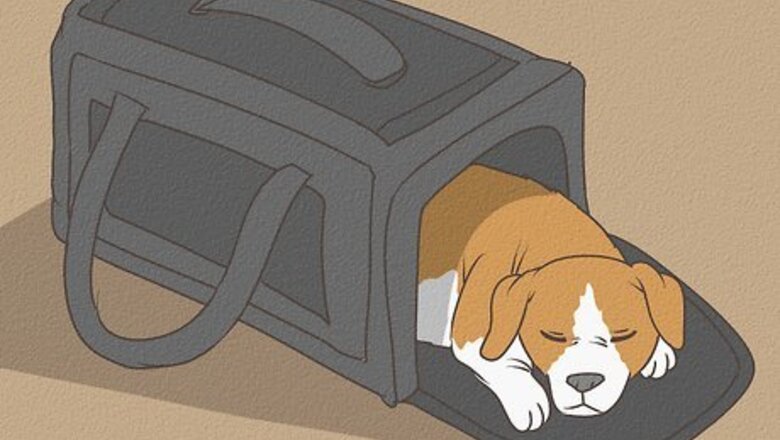
views
X
Research source
Carrying the Dog Safely
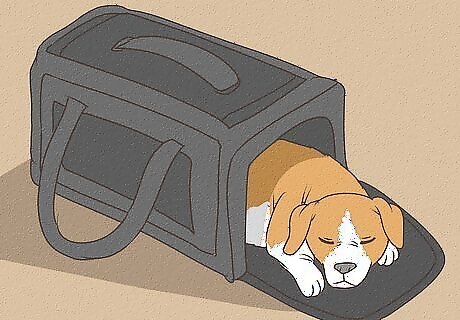
Use a pet carrier if possible. If you have a pet carrier that you can safely place the dog in, do so. This is the best option to protect both you and the dog. Encourage it to lie down, and support its body with anything soft to minimize movement during transportation. For more significant injuries, or in scenarios where the dog is having trouble breathing or is unconscious, you'll want to move it as little as possible. See the section in this article on dealing with specific injuries.
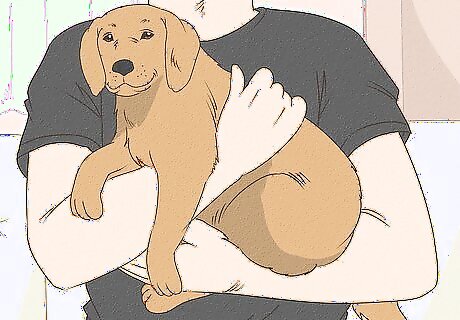
Carry a dog with a minor injury in your arms. If you do not have a carrier, the dog only has a limb injury, and you can carry it safely with both arms, it is fine to do so. Use one to support the chest, and reach over with your other arm, looping it beneath the dog's abdomen, just in front of its hind legs. Do you best not to move or otherwise agitate an injury, but make sure to fully support the dog's body with your arms.
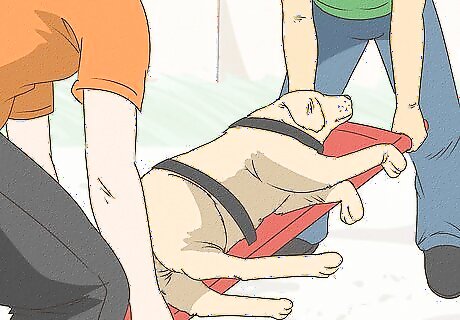
Carry large dogs on a stretcher. If another person is available to help, use something stiff, such as a board, to carry a large dog or a dog that is seriously injured. Position the dog on its side, taking care not to bend its body. If you have anything soft, wedge it along the dog's body to minimize its movement. When lifting with the assistance of another person, position yourselves on either side of the stretcher. Bend and lift simultaneously, using your legs to support the weight. Position your hands as far apart from one another as is comfortable. The tray from a dog crate is another good option for a stretcher. If you have something that can secure the dog in place, such as a belt, use it to do so. Always position a fastening device over the shoulders or hips, so as not to obstruct the ribs or abdomen.
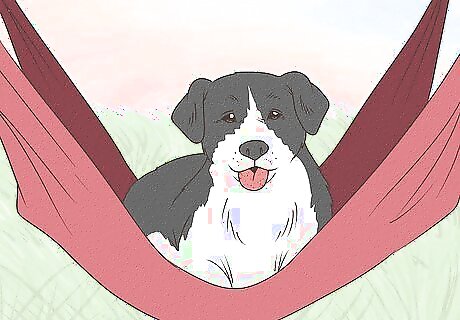
Use a soft material as a stretcher. If you have no stiff, mobile surface, a blanket or coat can be used as well. Position the material beneath the dog in a way that will support its body lengthwise. If the material is not large enough to hold the dog in place while moving, use something to fasten it to the stretcher. A soft material will only help you carry a dog if you have another person to assist you. Stand on opposite sides of the material and lift from the corners, pulling away from one another to keep the material as taught as possible. Prevent the dog's body from bending as much as you are able. If you are alone, you may need to drag the dog, but can still use a stretcher to help you do so.
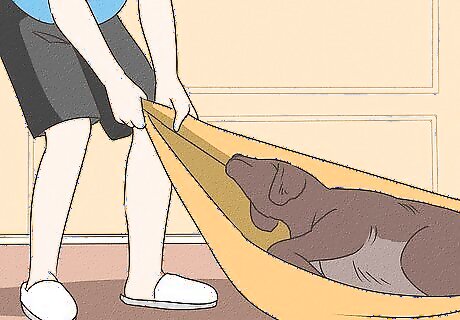
Move a large dog on you own. If you are alone, position the dog so that it is laying on its side. Place a board or blanket behind the dog's back, along its spine. Position yourself behind the dog as well. Tightly grip a fold of the dog's skin above its neck with one hand and above its hips with the other. Pull the dog carefully onto the board or other material. Lift one edge of the stretcher and drag it in the direction of help.
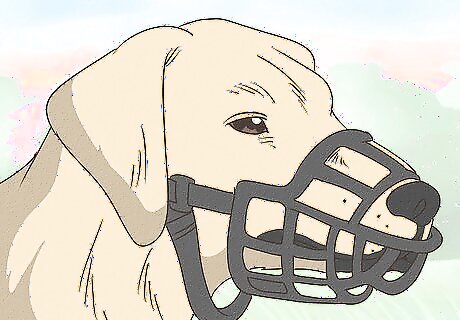
Muzzle the dog. Even if you know the dog and it is always friendly and gentle, you should almost always put a muzzle on an injured dog. Pain, shock, and confusion can cause even well-behaved dogs to panic and bite at you or someone else. If you do not have a muzzle, use a long strip of gauze or even a leash to make one. Drape it across the dog's muzzle, wrap it around its jaws, and wrap it back behind the ears to fasten. Do not muzzle the dog if it is vomiting or having trouble breathing. Remove or loosen a muzzles, especially a makeshift muzzle, once the dog is settled. Never leave a muzzle on a dog if you are unable to directly observe it.
Dealing with Specific Injuries
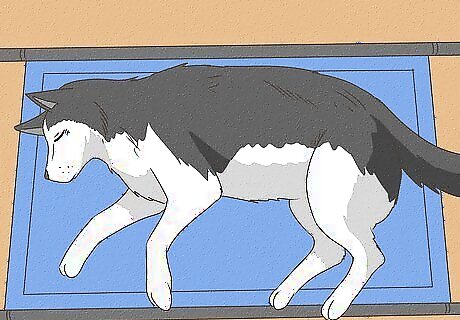
Check for evidence of a spine injury. If the dog has injured their spine, it is especially important that you carry them on a firm, stiff surface. Evidence of a spine injury include immobility or wobbliness in the rear legs, unconsciousness, differently-sized pupils, partial or complete paralysis, or blood flowing from the dog's orifices. There are many options for flat surfaces to use as stretchers. Aside from a board, you can use a sled, table leaf, bookshelf, ironing board, or even a window screen. Make sure the dog lays on its side, and that its body is not twisted while moving it carefully onto the stretcher. Have someone help you carefully move them onto the stretcher, if possible.
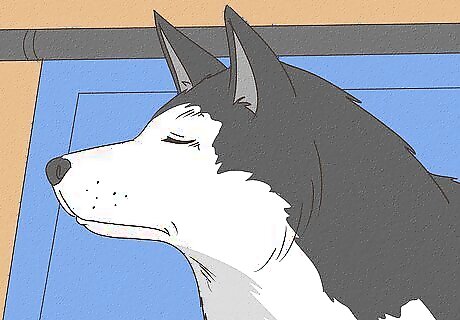
Position an unconscious dog's head. Position the head of an unconscious dog in normal alignment with the dog's body. With the dog on its side, this means the snout should be pointed forward or a bit downward. This is important to maintain both airflow to the lungs and blood flow to the brain. If the dog has vomited, position the head slightly downward, to allow vomit to easily vacate the dog's mouth. Be aware the a dog that has suffered a head injury is likely to vomit, even if they are unconscious.
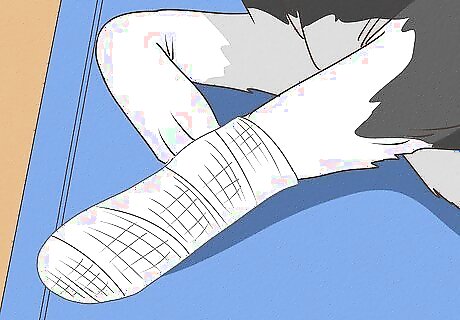
Do not splint a clearly broken limb. If the dog's limb is clearly broken, wrap it in something clean, such as gauze or a towel and tape it in place. The goal is reducing movement of the leg. As you move the dog, make sure to support the entire limb, so that it cannot bend at the point where it was broken or fractured. Do not attempt to push broken bones back into place.
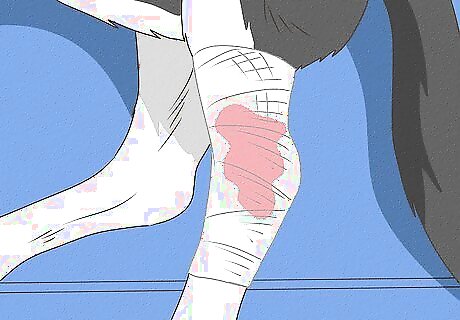
Stop uncontrolled bleeding. If the dog bleeds continuously for more than five minutes, you need to take steps to control the bleeding. First, apply pressure with a clean material, ideally a padded bandage or gauze. This will at least slow the loss of blood. If you have wrap and/or tape, wrap a bleeding wound with tension equal to gently pressing on the wound.
Getting the Dog to the Vet
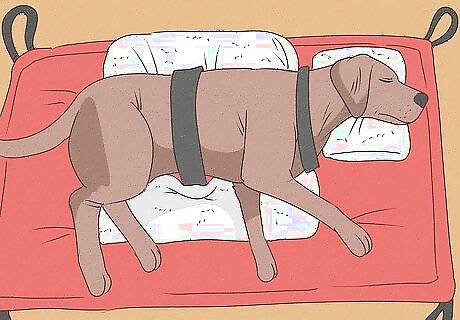
Minimize spine and neck movement during transportation. While carrying a dog on a stretcher or driving them, wedge anything you have that's soft around the dog's body to keep their body from moving around unnecessarily. Pillows or rolled up towels and blankets are ideal.
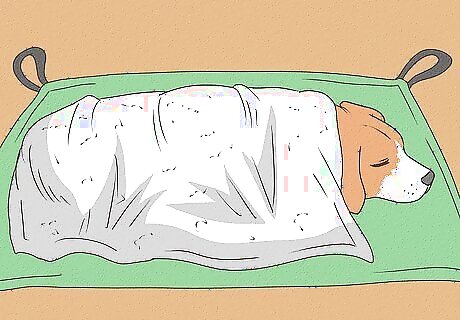
Cover the dog. Unless it is quite warm, use a blanket, towel, or piece of clothing to wrap the dog during transportation. Not only will this calm the dog down, if will prevent heat loss that may occur due to shock or injury.
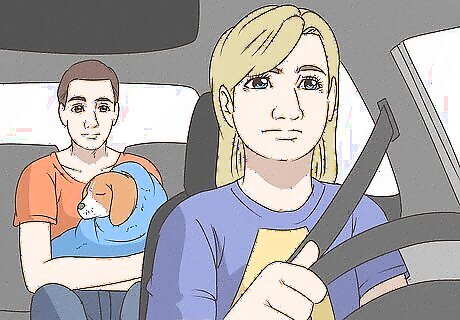
Have someone else drive. If anyone else is around, have someone else drive to the vet. This will allow you to help keep the dog from moving around. Further, this will keep you from driving distractedly.
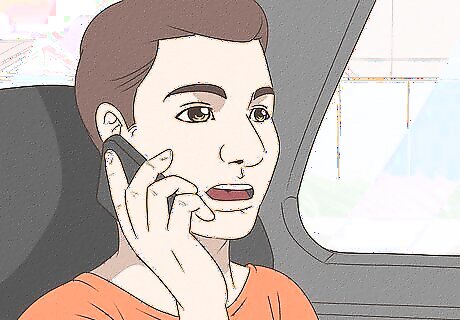
Call the vet en route. Call the veterinary hospital to let them know you're on your way. Describe the dog's injuries to help the vet prepare for your arrival and start helping the dog as efficiently as possible. If no one else is around to drive, complete the call before getting on the road. Another benefit of calling ahead is ensuring that the vet you're heading for is capable of treating your dog. If they are not, you may be able to have a vet meet you there for emergency service, or they can tell you where to go instead.



















Comments
0 comment